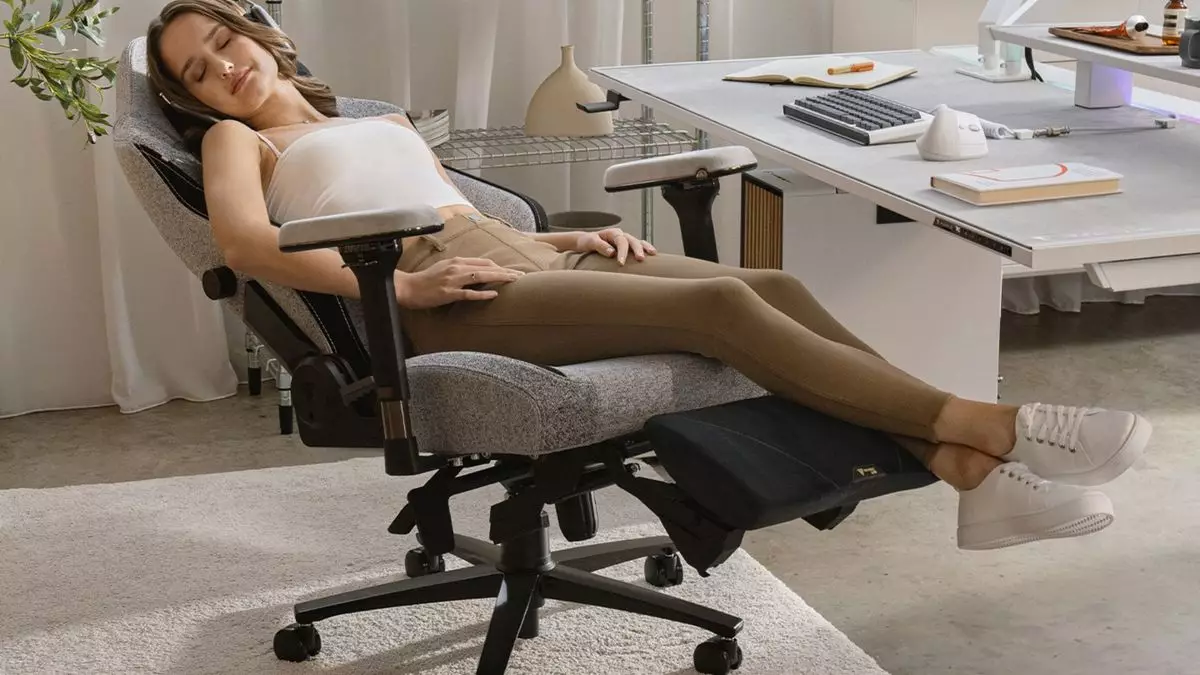Gaming chairs have become an essential part of the modern gaming experience, designed to offer comfort during those extended play sessions. However, as the design continues to evolve, so too does the quest for enhanced comfort features. Recently, Secretlab made headlines with its innovative yet perplexing addition to their line of gaming chairs: a special cushion tool that allows users to recline even further back. At first glance, one might wonder if this is a clever solution or a marketing gimmick that falls short of practical utility.
The premise of Secretlab’s new cushion tool is certainly intriguing. Comprising a memory foam cushion complemented by a metal attachment for easy clipping onto popular models like the Titan Evo, it allows for reclining angles of up to 80 degrees. While the company touts quick installation—requiring only three minutes—it’s essential to dissect whether this addition truly enhances usability or introduces unnecessary complexity.
One cannot overlook the implication embedded in Secretlab’s tagline: “Go from work to play, and even to nap with incredible ease.” While the idea of switching between these states effortlessly sounds appealing, it raises questions about practicality. Is a gaming chair truly the right environment for someone looking to take a nap? After all, gaming chairs, by design, target active engagement rather than relaxation.
Moreover, while they aim to provide better pressure relief with alleged “microscopic memory pockets” that contour to the leg’s arch, one must ask—does this cushion support napping more effectively than simply adjusting the existing chair features? Gaming chairs tend to offer substantial ergonomic support already. By introducing another layer, there’s a risk of compromising the chair’s original design integrity.
As we analyze the target audience for this cushion tool, we are presented with a paradox. Secretlab appears to envision customers who value flexibility in their gaming setup. However, is this product aimed primarily at hardcore gamers? Or rather, should it be marketed toward users with mobility challenges, who may genuinely benefit from such adjustments? Regrettably, this latter point appears to be overshadowed by the emphasis on napping—something that may deter a significant segment of their primary market (avid gamers looking to minimize disruptions during their gaming sessions).
Additionally, pricing poses a significant hurdle for potential buyers. With the Standard Edition costing around $199 and the Founder’s Edition reaching as high as $250, one must evaluate whether this investment holds any true merit. The considerable price tag for an accessory that many might view as superfluous raises eyebrows, especially in a landscape where consumers can invest in substantial components, like SSDs or upgraded graphics cards.
The essence of upgrading a gaming chair’s capabilities through a supplemental cushion inevitably invites skepticism. Although Secretlab maintains a strong reputation for quality with their existing products, the introduction of this cushion raises pressing concerns about its actual value in the gaming experience. It poses a salient question: is this product genuinely enhancing comfort, or does it ultimately serve as an expensive accessory that complicates an already-efficient chair design?
While there’s merit in innovation and attempting to cater to diverse user needs, this specific endeavor seems to stray into the territory of excessive complication. The notion of “going from work to play, and even to nap” may resonate with a fraction of consumers, yet for many, the typical gaming chair already embodies the necessary functionalities. Therefore, the question persists: is the new cushion tool a clever innovation or merely an unwarranted addition to an already comprehensive gaming solution?


Leave a Reply